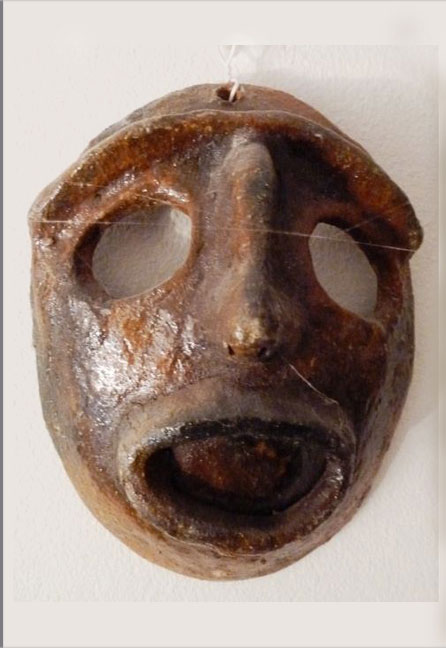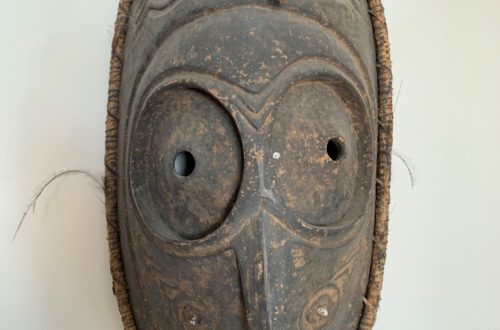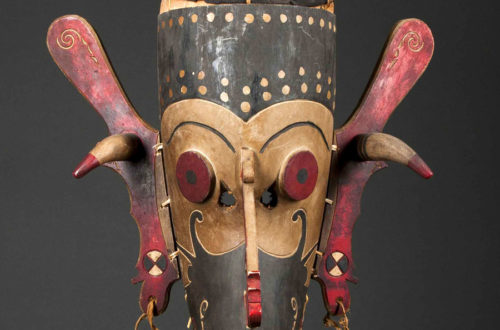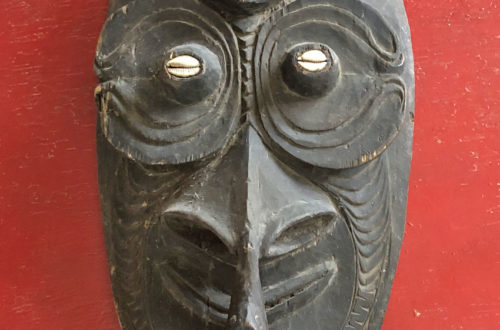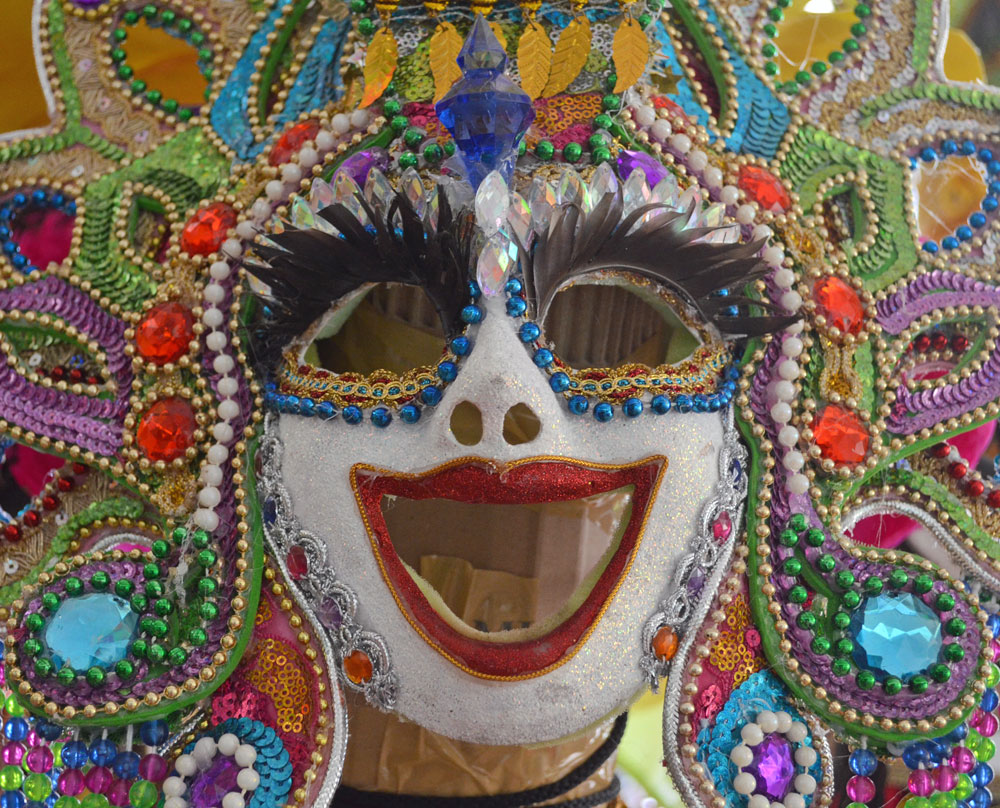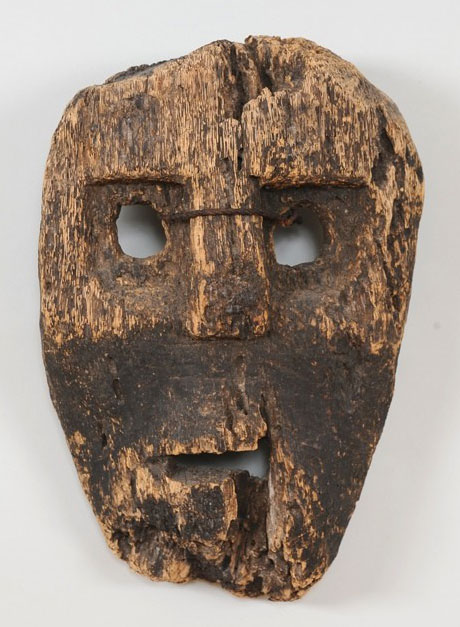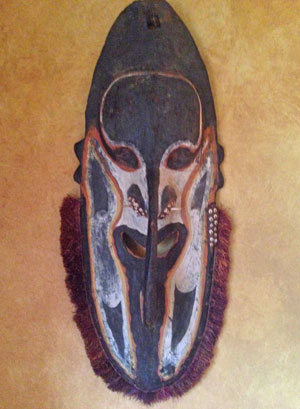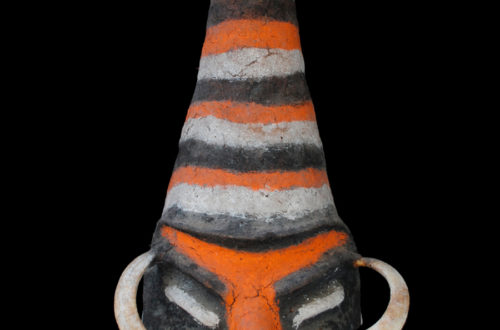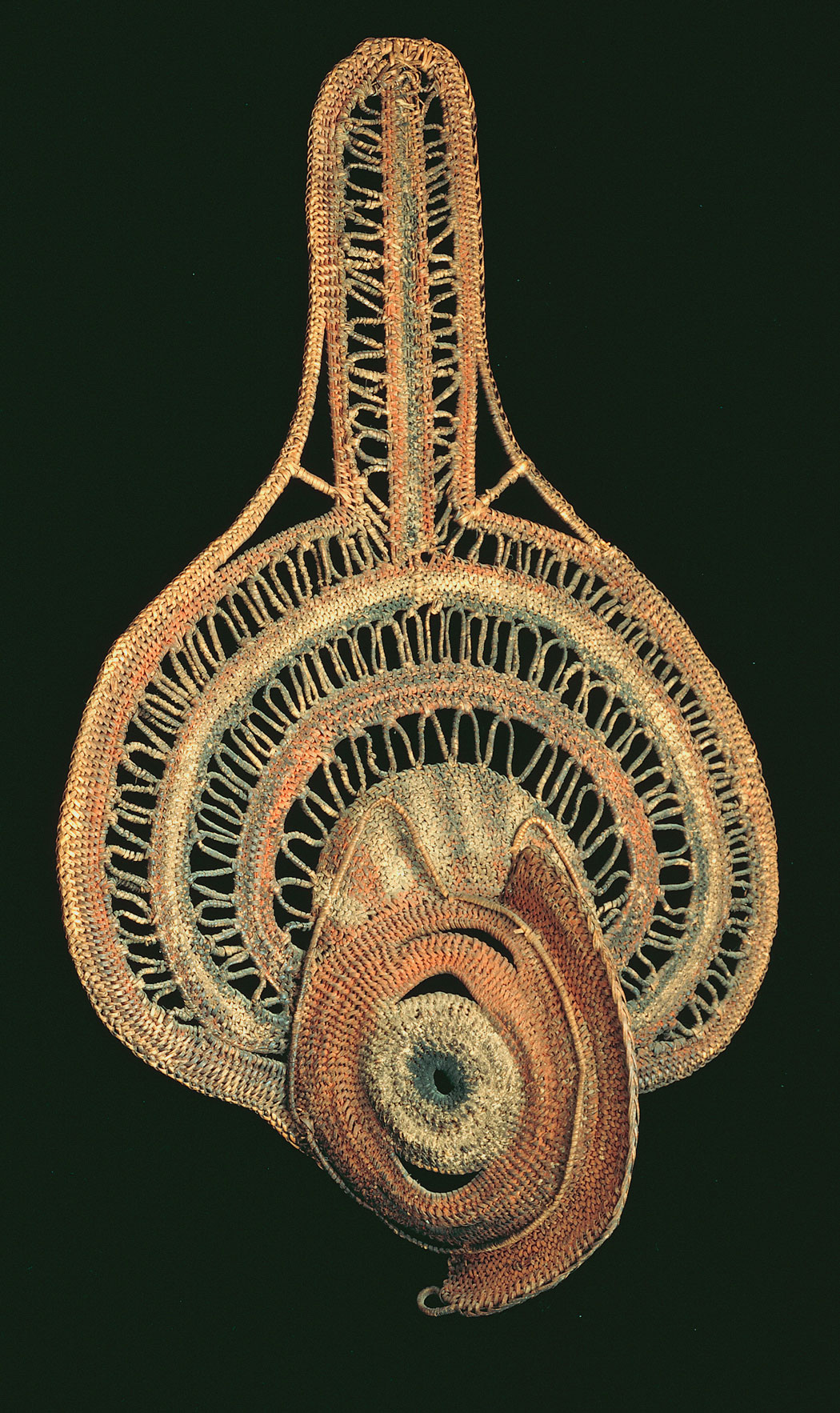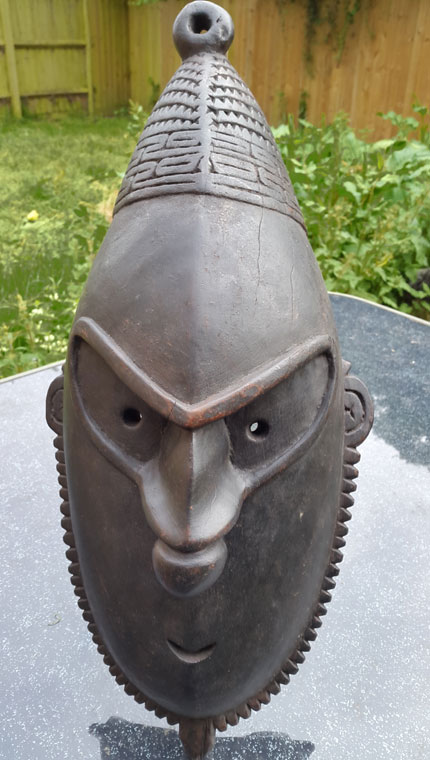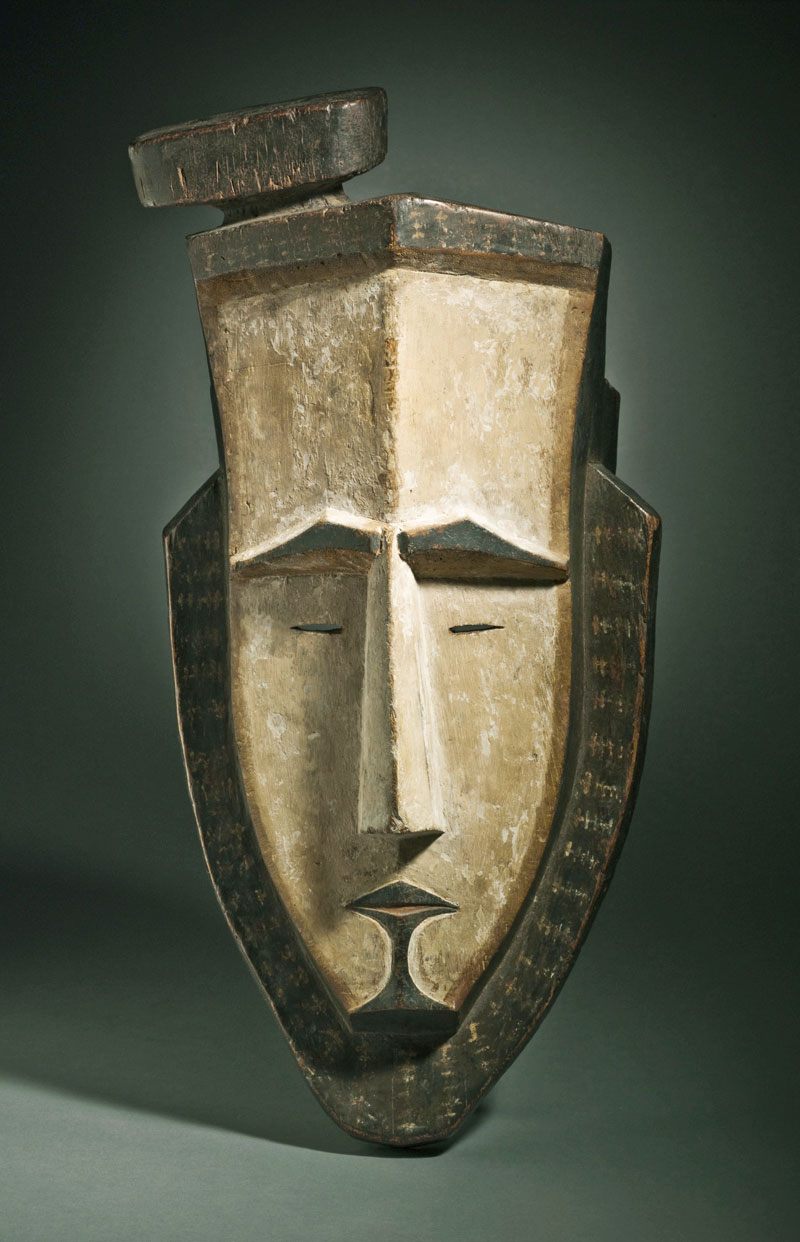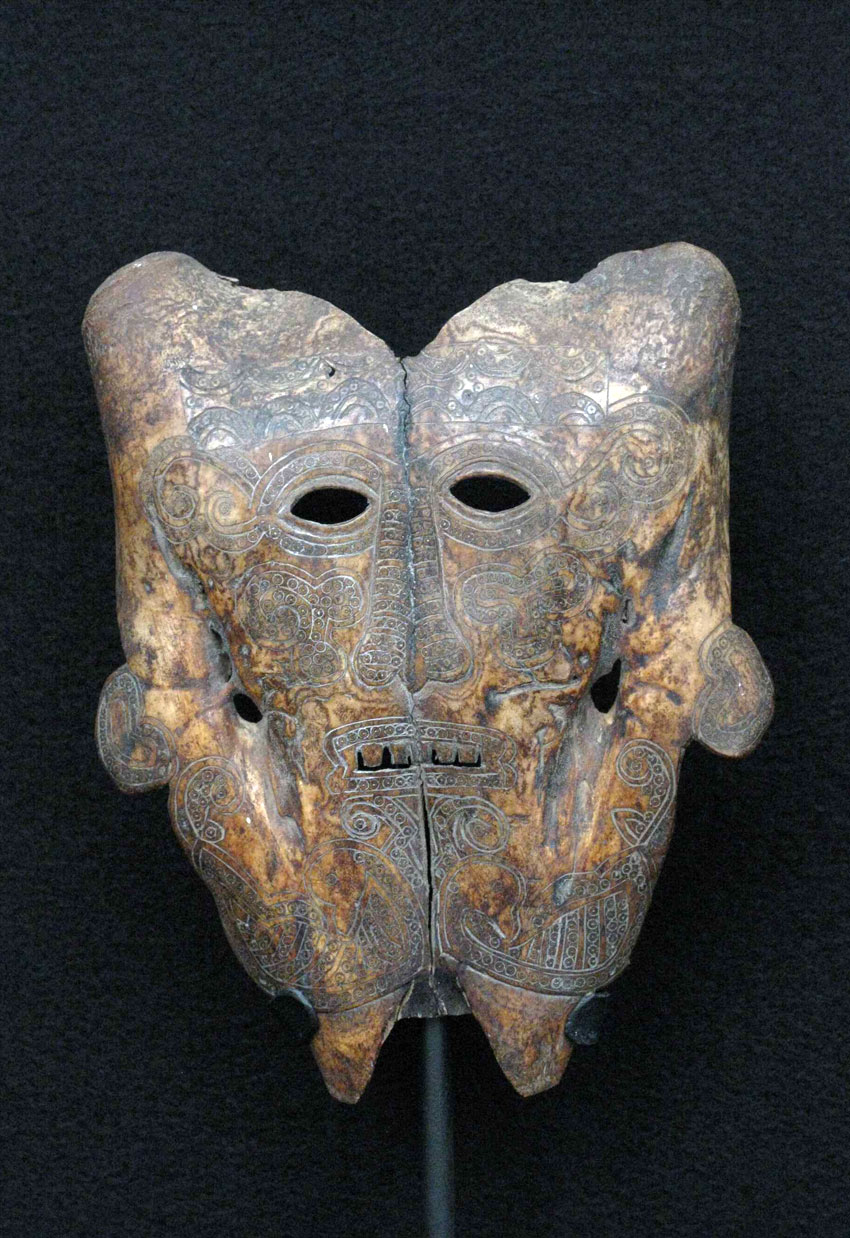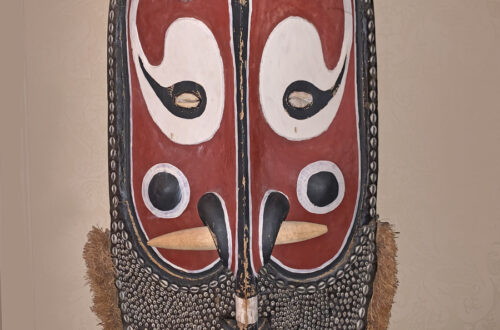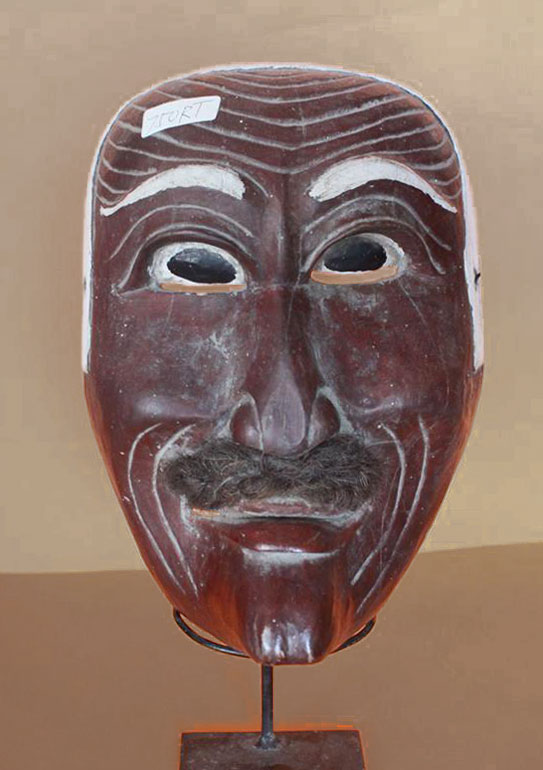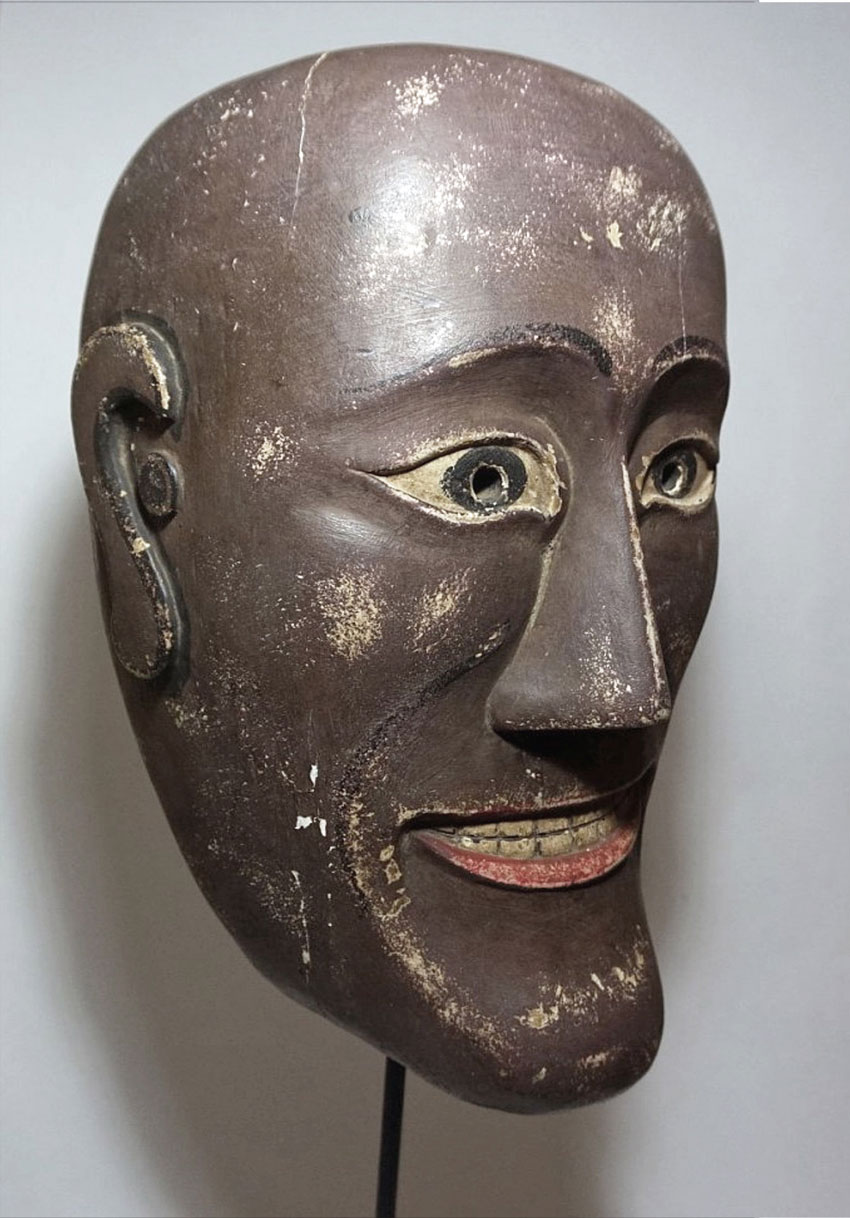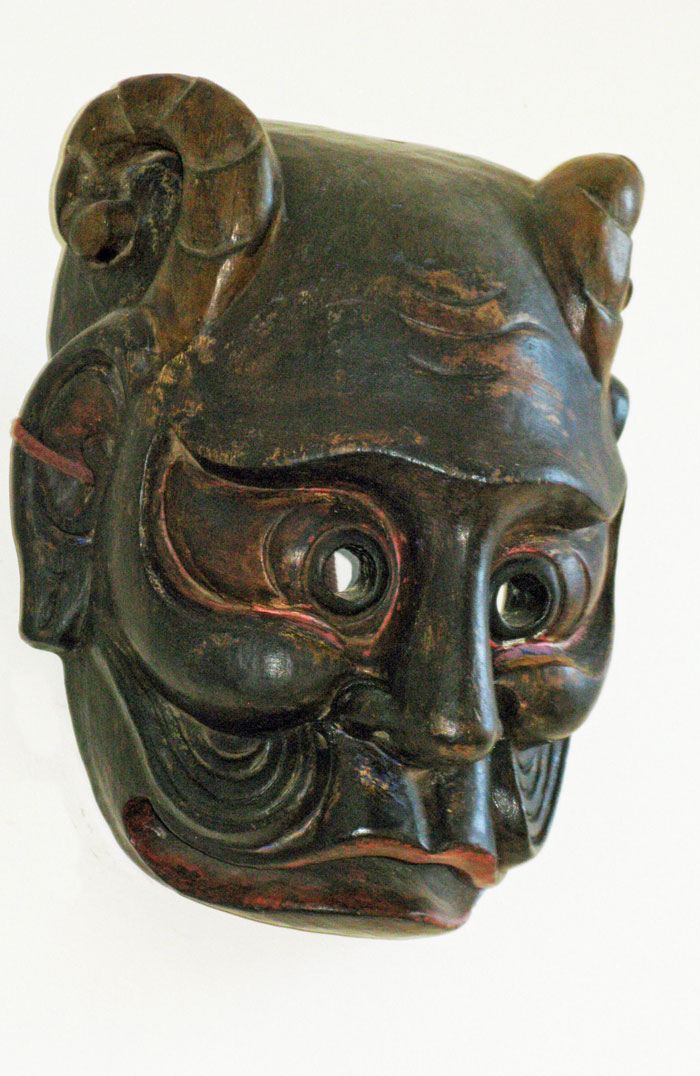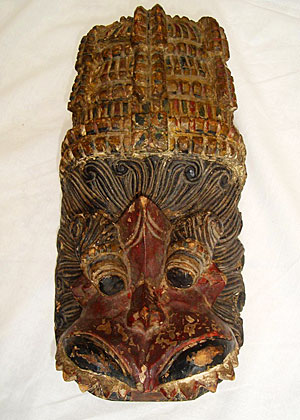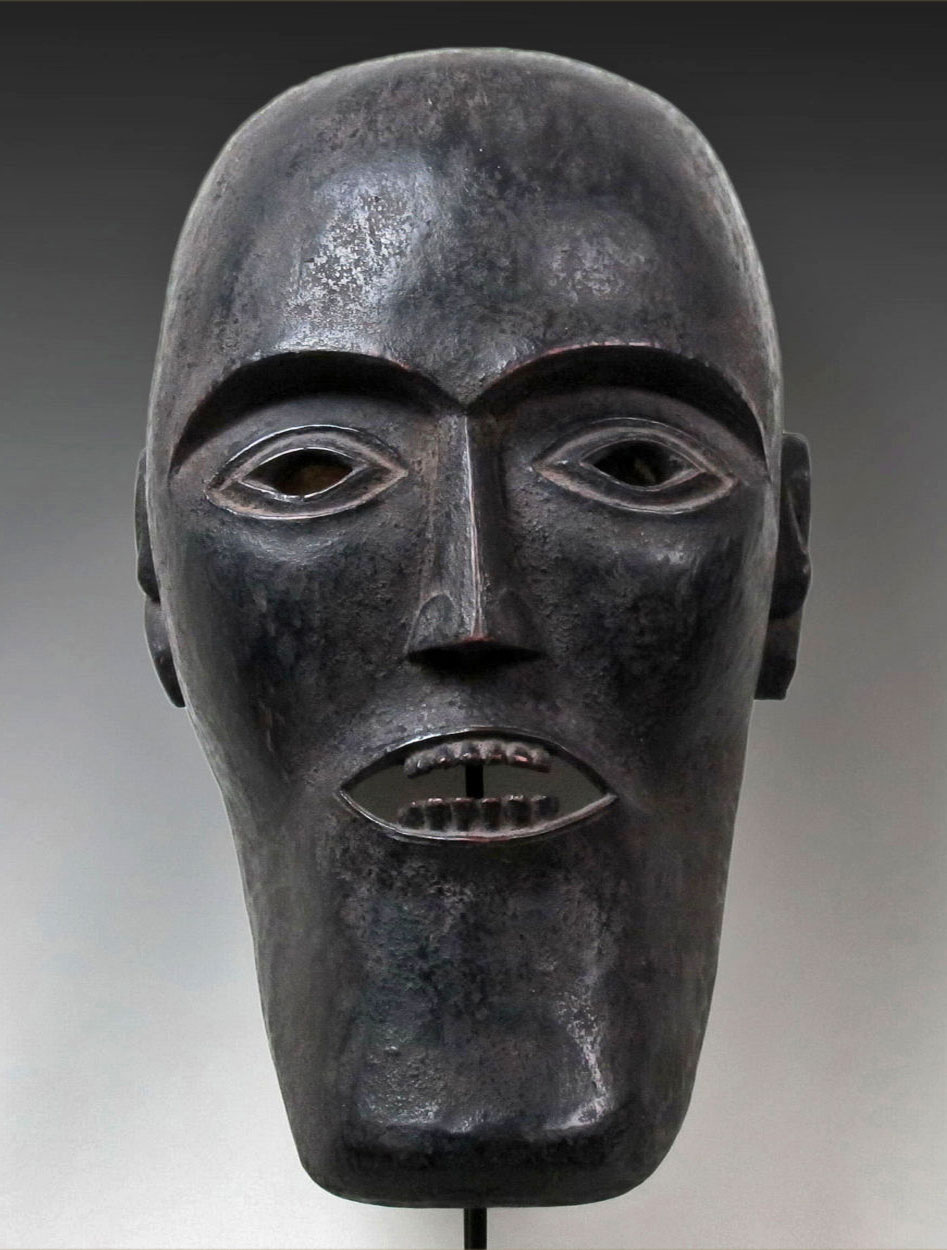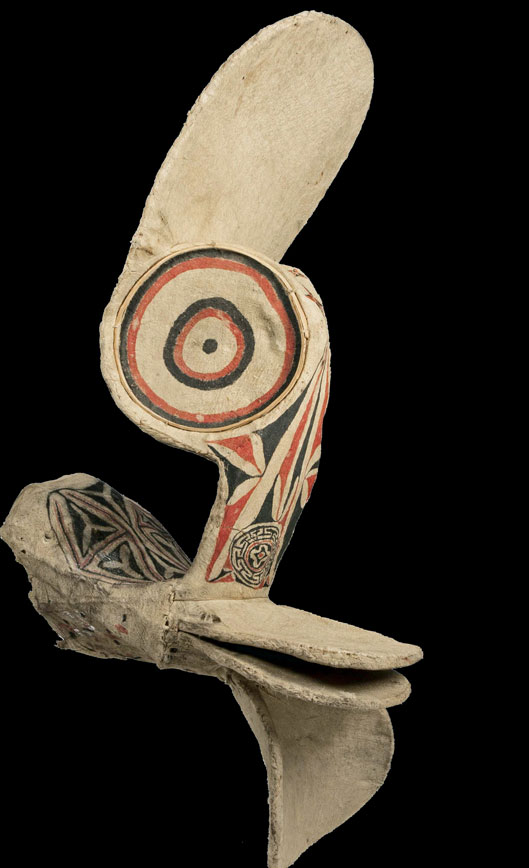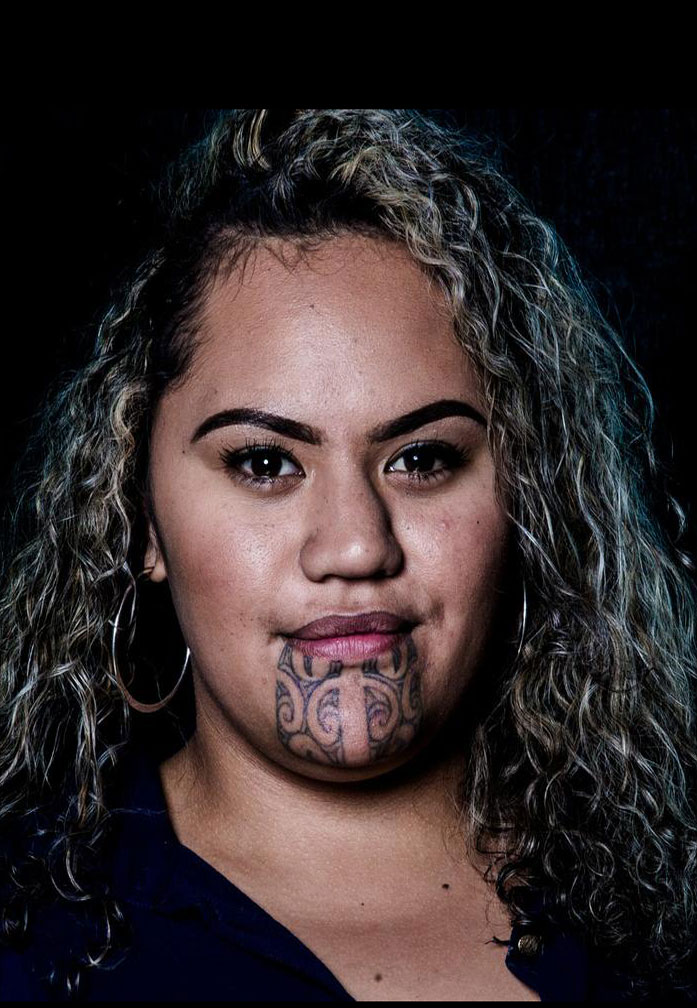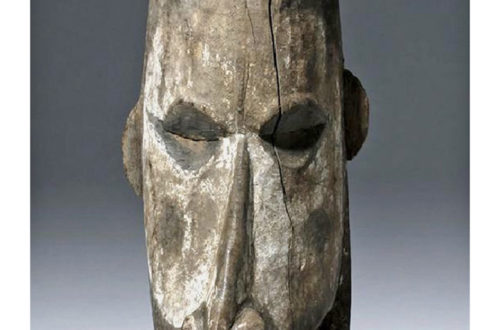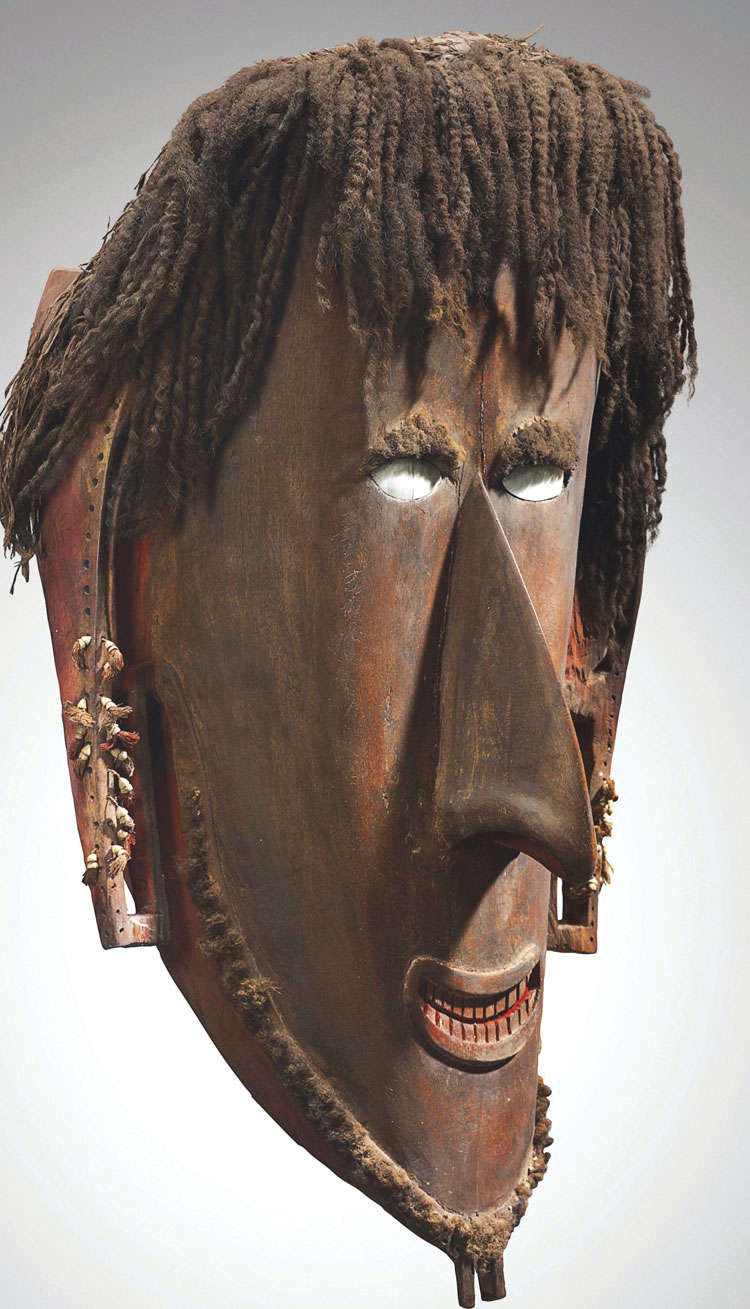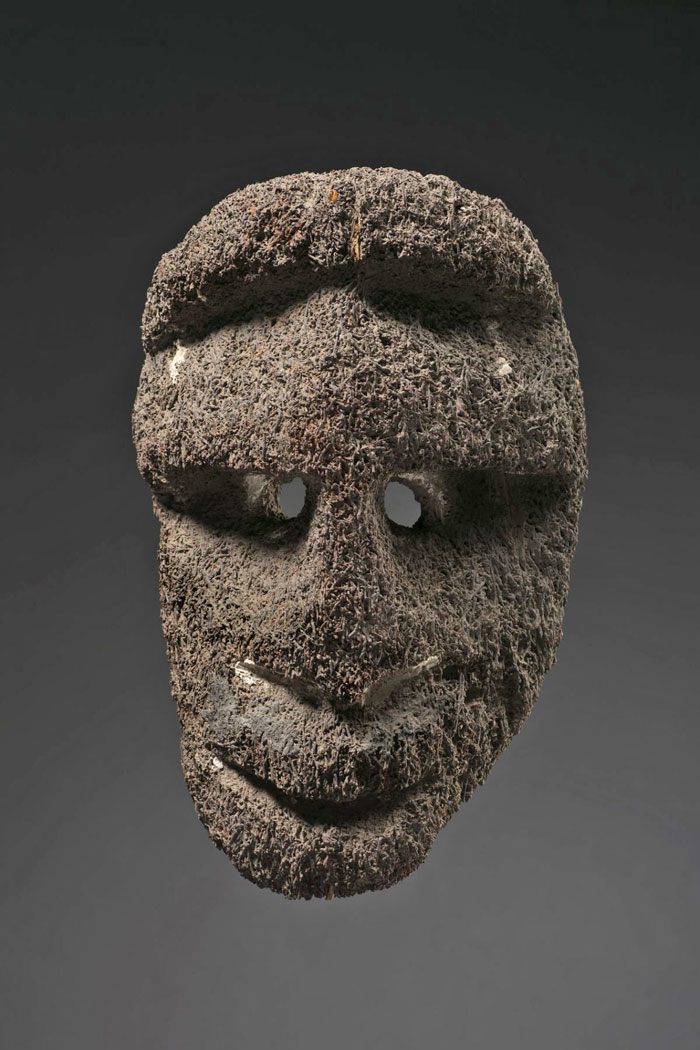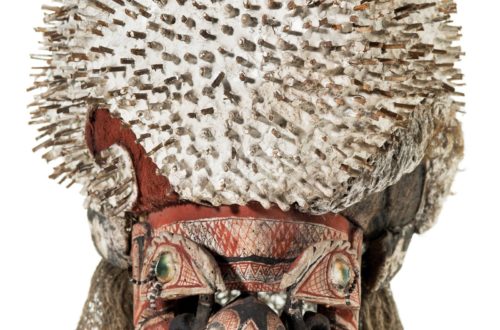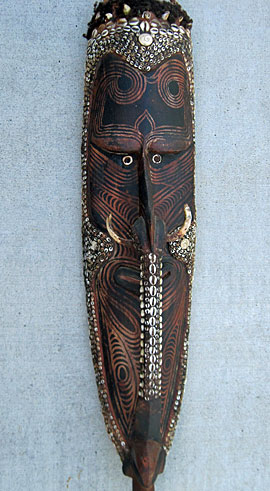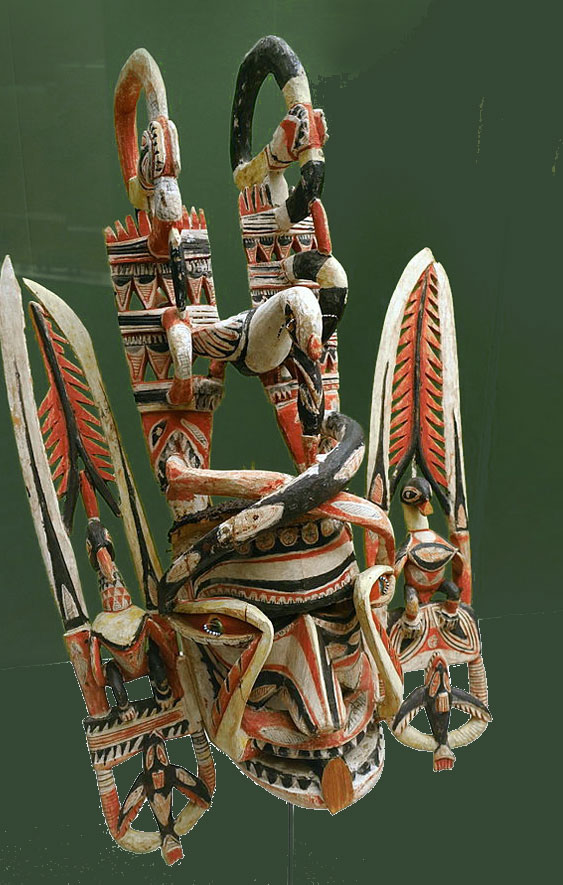Janet King on Pinterist has only this to say about the older mask: the Fijian people are the least talented mask-makers in the world. I doubt that, but this is the only example I’ve ever seen. We need to know more about size, material, history, usage, etc. Let’s hope someone makes a comment. The newer (and purely decorative) Fiji mask, with its turtle representing happiness, measures about 8 inches. This mask was hand carved and hand painted for the tourist trade. These fakes come in many colors or plain wood, and have that Tiki look we see in so many souvenirs from the Pacific Ocean area. The Fiji Islands are…
-
-
Carnaval mask, Bacolod, Philippines
Bacolod is known for its Masskara Festival which is a parade and party like that of Brazil. People wear masks and party out on the street, drinking, eating and having a great time. The mask motif of the festival has changed from masks influenced by native Spanish-speaking Filipinos to those influenced by the Carnival of Venice and the Rio Carnival. Earlier masks were hand-painted and adorned with feathers, flowers and native beads, while contemporary masks feature plastic beads and sequins. There is a big festival in the Spanish colonial tradition in Marinduque that is religious in nature. You can see a much different Morione mask in the Oceania Categories.
-
Woven yam mask from PNG
I recently posted a wooden yam mask in bright yellow. Here is a much different, woven-basket yam mask from the Abelam people, Maprik district, Sepik region, Papua New Guinea. It looks large– about 18 inches. Basket yam masks are also an essential part of the elaborate yam harvest ceremonies and festivals for the Abelam people. Rituals associated with yams form the basis of the spiritual life for them. Both the woven and the wood examples are important for collectors to have.
-
Yellow yam mask from PNG
Here we have a yam mask from the Abelam people of Maprik, East Sepik Province, Papua New Guinea. It is mid 20th century, but the wood carving and colorful natural pigments are still in good condition. It is 11.5 inches high. Yams are the most important crop in PNG. This design is a carved replica of a bird of paradise and it is very common for the yam ceremonies. There are woven yam masks that are much different. I found this yellow beauty at the Morgan Oakes Gallery.
-
Moluccans scrimshawed bone mask
Our bone mask from the Moluccas Islands is beautiful with its subtle carving and unusual shape. The Moluccans, located North of Timor and East of Sulawesi, became part of Indonesia in 1950. Wish I could tell you more about this unique mask. Though “Ask the Mask Man” is mostly about telling new owners what they have, I frequently add photos that I find interesting. Then I categories each mask and add it to one of 15 groups which you can easily access. I hope “Categories” has become a useful research tool for some of you collectors.
-
Batak mask from Sumatra
Batak is a collective term used to identify a number of closely related Austronesian ethnic groups predominantly found in North Sumatra, Indonesia who speak Batak languages. The term is used to include the Karo, Pakpak, Simalungun, Toba, Angkola, and Mandailing which are related groups with distinct languages and customs. Well carved masks like this will show up in other parts of Indonesia as well.
-
Sumatran helmet mask
Here is a very fine example of a Batak ceremonial dance mask from the Sumatra region of Indonesia. It is carefully carved and has a nice patina. Batak is a collective term used to identify a number of closely related Austronesian ethnic groups predominantly found in North Sumatra, Indonesia who speak Batak languages. The term is used to include the Karo, Pakpak, Simalungun, Toba, Angkola, and Mandailing which are related groups with distinct languages and customs.
-
Modern Maori woman’s chin tattoo
When New Zealand was colonized in the 1800s, the ancient Māori practice of moko kauae—or sacred female facial tattooing—began to fade away. Now the art form is having a resurgence. Here’s what it means to stamp your identity on your face. For New Zealand Māori women, the moko kauae, or traditional female chin tattoo, is considered a physical manifestation of their true identity. It is believed every Māori woman wears a moko on the inside, close to their heart; when they are ready, the tattoo artist simply brings it out to the surface. Last month, Nanaia Mahuta became the first member of parliament in the world to wear a moko…
-
Fern mask from Thomas Murray
When I see something this unusual I just have to pass it along to our readers. Ritual mask Malekula Island, Vanuatu Fern root 19th or early 20th Century 13.5 inches This mask of extraordinary presence and age is likely to have been carved on Malekula Island for a spirit ritual. The purpose of such pieces has not been well documented but the great ones, as in this case, are plainly early. Save
-
Matua mask from Oceania
Northeast of Papua New Guinea is the much smaller island of New Ireland. Though small in size and population, the Melanesian people who live there have always had a rich tradition of masquerade. After the Cook explorations in the middle 19th century, a few of their masks began to show up in Europe, and like so many of the West African masks (the Yaure-Baule you just saw), those few Oceanic masks also had an effect on European modern art. If you go to the “Oceania” category in our archive you can see another much different mask from New Ireland. They are both very artistic and complex, and unfortunately, quite rare.…
